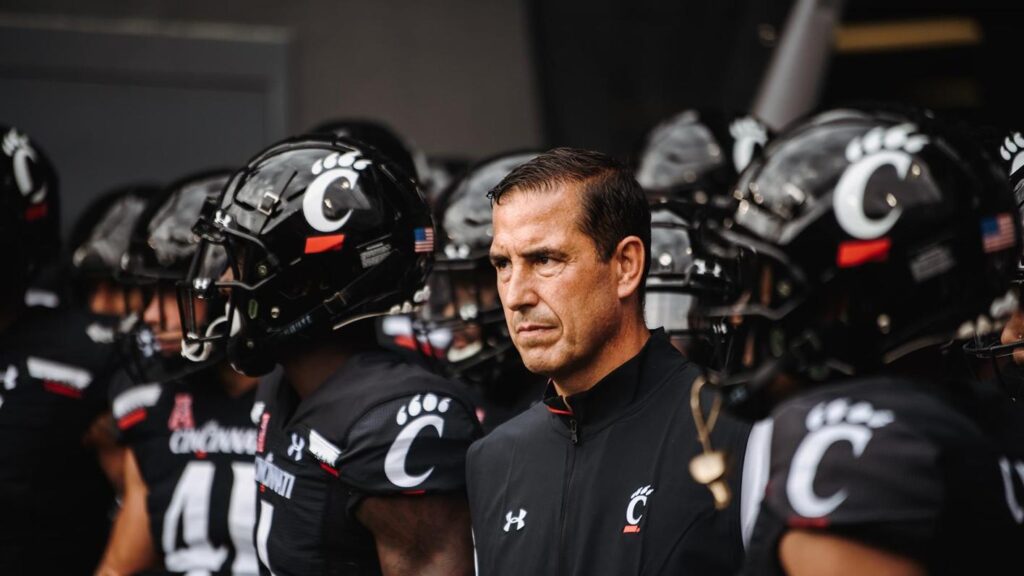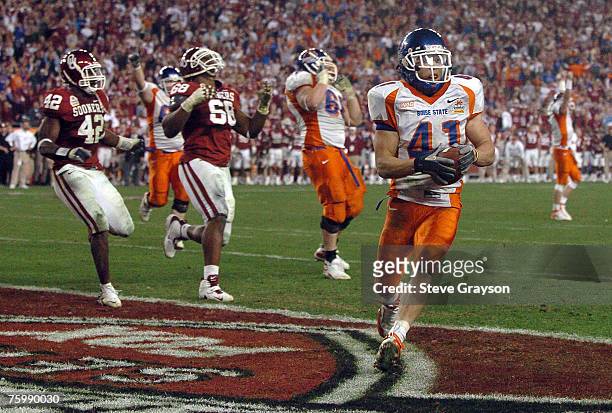In just about every college football season there is a cinderella story of a non-Power Five program who shocks the world and knocks off a blue blood program in the postseason. Before the NY6/CFP era, we used to call these teams “BCS busters,” or a “David” who take down a “Goliath.” So many epic moments from the Boise State statue of liberty game to UCF’s undefeated season are etched in our memories — teams who have significantly helped legitimize the Group of Five and fully live up to the “why not us” mantra.
Now it’s time to rank them.
The criteria for the top-10 programs listed are teams that actually competed in a BCS/NY6 bowl game as a member of a Group of Five conference. For instance, 1998-99 Tulane went 12-0 but did not play in a BCS bowl game (Liberty Bowl), which, quite frankly, was a key reason why at-large bids for BCS bowls came to fruition. Regular season resume and overall record play a pivotal role as well. Let’s get into it.
Honorable Mentions
- Tulane (2022)
- West Virginia (2011)
- Louisville (2012)
- UCF (2014)
10. West Virginia (2005)
The ’05 Mountaineers were projected as an above-average Big East program. That’s until the college football world was introduced to quarterback Pat White and running back Steve Slaton.
The two dynamic freshman were an absolute cheat code in head coach Rich Rodriguez’s zone-read option scheme, as White and Slaton both combined for 2,175 yards and 26 touchdowns on the ground that season.
The lone loss of WVU’s 11-1 campaign came against No. 3 Virginia Tech, but that was before the Mountaineers took down Georgia in an epic 38-35 Sugar Bowl victory.
9. Houston (2015)
Tom Herman’s first season as the head coach of the Houston Cougars went about as well as it could have. UH tallied 13 wins and went 3-0 against Power Five opponents — outscoring them 106-56 — while earning its first AP top-10 finish since 1990.
Electric dual-threat quarterback Greg Ward Jr. engineered one of the nation’s most high-octane offenses — one that averaged 40.4 PPG and scored 24+ in all but one game all season, which came in a 20-17 upset loss to UConn in late November. In a season where a stacked AAC conference had five teams make the AP top-25 poll, Houston came out on top as champs before knocking off No. 9 Florida State 38-24 in the Peach Bowl.
8. Utah (2008)
Kyle Whittingham’s consistent success as a head coach at the FBS level goes all the way back to 2008 when the Utes went a perfect 13-0 after defeating Nick Saban’s Alabama Crimson Tide in the Sugar Bowl. Few truly believed Utah could do it, especially against an Alabama team that was ranked No. 1 in the nation before its SEC title game loss to Florida a few weeks prior. That’s until the Utes raced to a 21-0 lead in the first quarter and cruised to a 31-17 victory in New Orleans. It would be Saban’s final loss to a non-Power Five program in his coaching career and Utah’s second BCS bowl win of the decade. While quarterback Brian Johnson and running back Matt Asiata led a balanced offensive attack, the ’08 Utes were known for their stout defense — a unit that only surrendered 17 PPG.
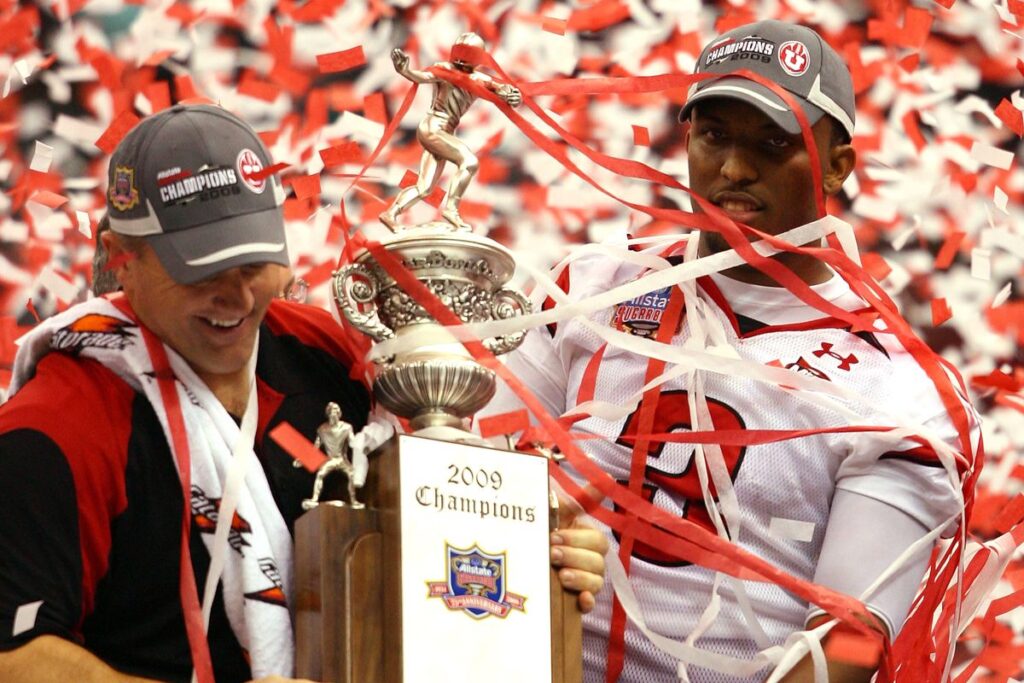
7. Boise State (2009)
Quarterback Kellen Moore and Boise State had a historic 50-3 record from 2008-2011, with the ’09 campaign being the best of the bunch. The Chris Petersen-led Broncos went 14-0 that season, defeating No. 3 TCU 17-10 in the Fiesta Bowl after winning the WAC and knocking off Oregon, who made the Rose Bowl that season, 19-8 to open up the year. The potent Boise State offense ranked first in the country in total offense (42.2 PPG), while Moore set a then-FBS record 0.70% single-season interception rate to go along with the nation’s second-best QBR (161.7), trailing only Tim Tebow.
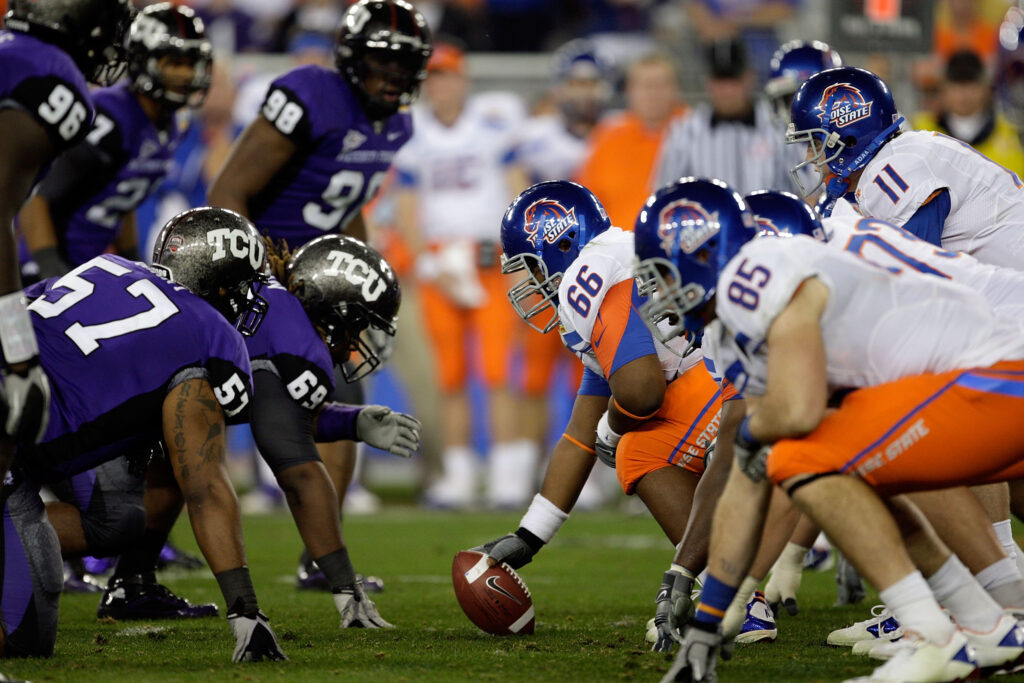
6. West Virginia (2007)
The Mountaineers had an epic seven-year stretch from 2005-2011, going 70-20 amid the White-Slaton and Geno Smith-Tavon Austin eras. WVU’s 2007 squad was arguably the most complete team though — one that was a win away from competing for a national title. Anchored by White and Slaton in the backfield, along with bulldozer fullback Owen Schmitt, the Mountaineers averaged 39.6 PPG (9th in FBS) to compliment the 8th-best defense in the country. How this team managed to lose twice is still mind-boggling, but the Mountaineers’ infamous 13-9 loss to Pitt in the “Backyard Brawl” is what shut the door on their national title hopes and still haunts the fanbase to this very day. Considering how WVU pounded an elite Oklahoma team 48-28 in the Fiesta Bowl further solidifies how national title ready this team truly was.
5. Utah (2004)
The OG “BCS buster.” Urban Meyer’s innovative offense paired with Heisman finalist quarterback Alex Smith was a treat to watch in the 2004-05 season, as the Utes’ potent attack ranked third in the FBS in total offense and averaged 45.3 PPG to help cap off a magical 13-0 campaign. Utah became the first non-Power Five program to win a major bowl game after throttling Big East champ Pitt 35-7 in the Fiesta Bowl. That season, the Utes also defeated three Power Five teams (Texas A&M, Arizona, UNC) by a combined score of 110-43. Utah essentially paved the way for the G5, helping legitimize small schools across the nation.
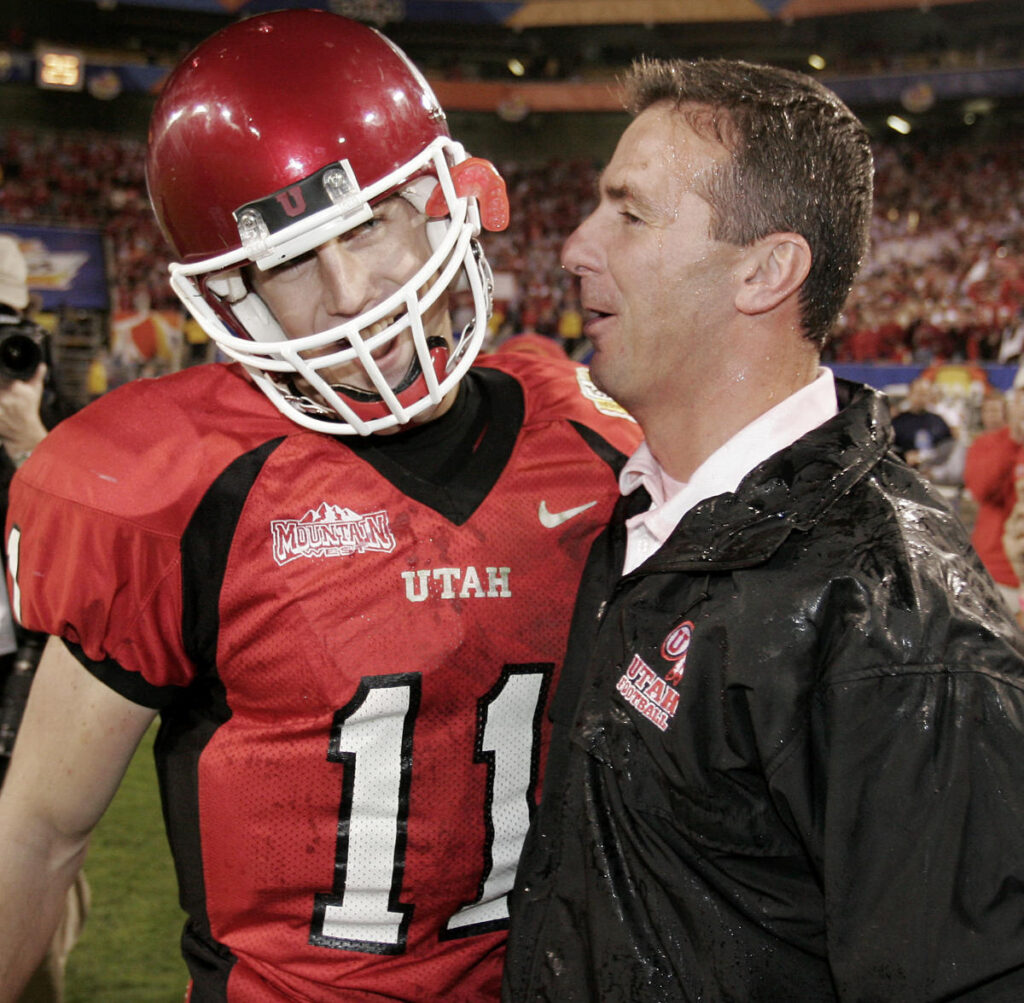
4. Boise State (2006)
“Boise State has won the Tostitos Fiesta Bowl! Do you believe it?!” Those words still echo across the college football world to this day. In one of the most improbable and thrilling football games in the sport’s history, the Broncos knocked off Oklahoma 43-42 in an epic 2007 Fiesta Bowl to cap off a perfect 13-0 season.
It was the true David vs Goliath matchup when the underdog team from the WAC took on the powerhouse Sooners who were one of the juggernauts of the sport. Quarterback Jared Zabransky and running back Ian Johnson headlined the nation’s second-best offense (39.7 PPG) to compliment a stout defense that only allowed 17.6 PPG.
Anyone who has paid attention to the sport for at least two decades knows about the 2007 Fiesta Bowl. From the hook-and-lateral to the statue of liberty to the postgame marriage proposal, that game sums up why college football is the absolute best.
3. UCF (2017)
The UCF Knights made the widely recognized claim as “national champions” in 2017 following a perfect 14-0 run under second-year head coach Scott Frost. Quarterback McKenzie Milton commanded the country’s highest-scoring offense (48.2 PPG) who also featured a lethal wide receiver corps between Tre’Quan Smith, Gabe Davis, and Jordan Akins and a running back committee that averaged 198.7 YPG on the ground. The only knock on the Knights was that they ranked 94th in total defense, which is a reason why they weren’t higher on this list.
Regardless, 2017 UCF had a handful of memorable moments, such as the epic 49-42 victory over USF in the “War on I-4” and a high-scoring AAC title game win over Memphis, but none compared to the program’s upset 34-27 win over No. 7 Auburn in the Peach Bowl — the game that capped off the Knights’ flawless campaign and cemented their national relevance. This season sparked UCF’s incredible 25-0 run that was eventually snapped in the 2019 Fiesta Bowl vs Pitt.
2. TCU (2010)
The 2010 TCU Horned Frogs are arguably the most complete team on this list. Anchored by the sixth-best defense in the nation, head coach Gary Patterson and the Horned Frogs’ magical 2009-10 run was simply unforgettable. In a highly-anticipated early-November conference showdown at then-No. 6 Utah, TCU blew the doors off the Utes 47-7 to solidify the program’s national prominence. Led by legendary quarterback Andy Dalton and Mountain West DPOY Tank Carder, the Frogs capped off the campaign by knocking off No. 4 Wisconsin 21-19 (the Badgers’ lowest point total of the year) in the Rose Bowl to finish the season with a flawless 13-0 mark.
- Cincinnati (2021)
The only Group of Five program to clinch an odds-defying College Football Playoff berth and reach a bowl game that actually gave them a shot to win a national title. While some may think that the 2021 Bearcats were not necessarily the most “talented” team on this list, they broke the barrier and officially gave G5 fans hope of playing for a national title. That in and of itself is enough to put them atop this list.
Led by quarterback Desmond Ridder and future 2x All-Pro cornerback Sauce Gardner, Cincinnati dominated its way to the Playoff, defeating AAC opponents by an average of 22.8 PPG and earning a convincing 24-13 win over No. 5 Notre Dame in October. Cincinnati’s lone loss in its 13-1 campaign came in the Cotton Bowl (CFP semifinal) against an Alabama squad who had a Heisman Trophy-winning QB (Bryce Young) and were SEC champs. Cincinnati’s nine players selected in the 2022 NFL Draft was the most by a G5 school this century (excluding Miami (FL) as a member of the Big East).
